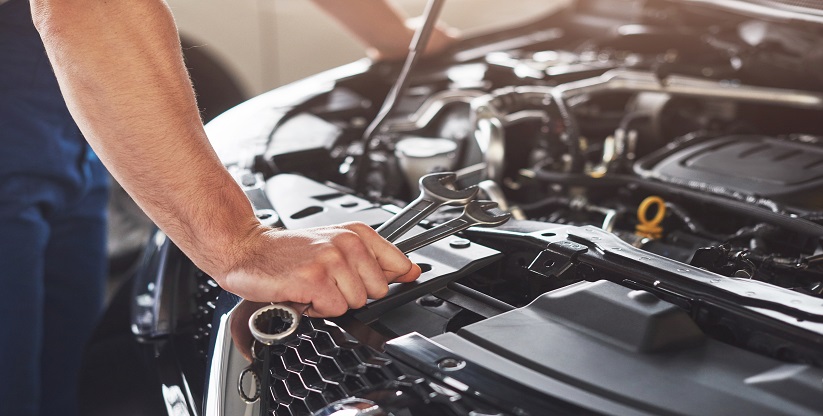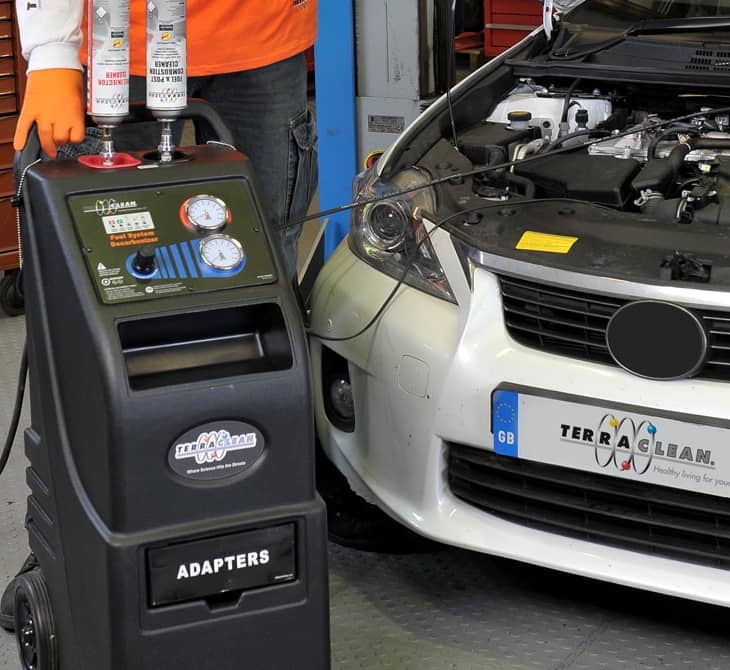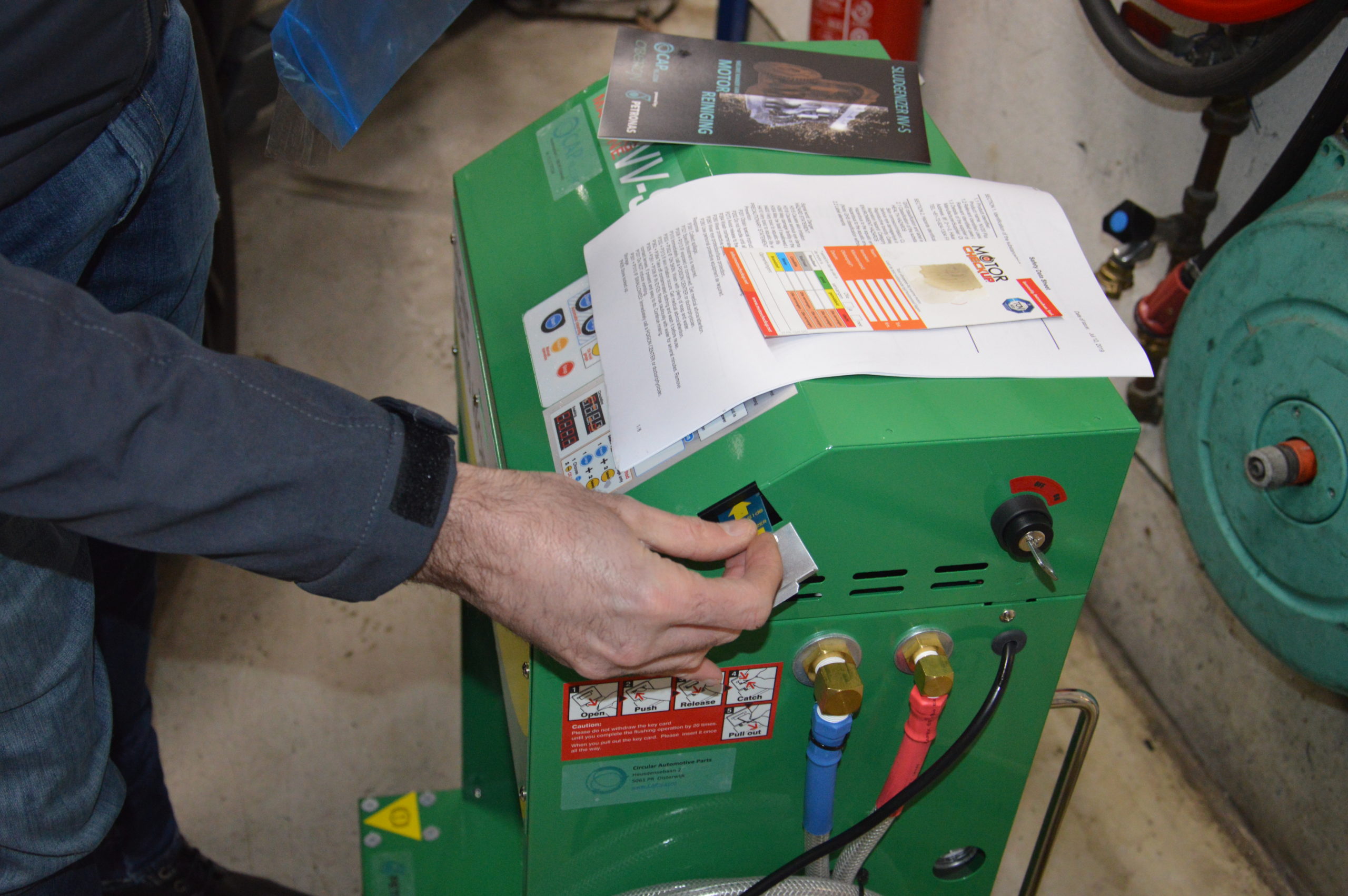
Decarbonization of car engines eliminates excess carbon deposits from the cylinder head, combustion chamber, and piston chambers.
An engine may experience damage, decreased performance, or even stop running completely if there is an excessive carbon buildup.
Keep in mind that prevention is always preferable, even if your warranty covers engine failure.
There are two methods for decarbonizing automobile engines: chemical and mechanical.
Mechanical Decarbonization Method
In order to reach the exhaust assembly, engine chambers, and pistons, a technician must disassemble your engine using the mechanical approach. This is one of the most complete and physically demanding methods of cleaning engine carbon buildup because they then gently brush off the carbon buildup.
1. Dry Ice Blasting
Dry ice blasting is a cleaning process that uses pellets of solid carbon dioxide (dry ice) as the blasting medium. The pellets are accelerated in a pressurized air stream and directed at the surface to be cleaned.
Upon impact, the dry ice pellets sublimate (turn directly from solid to gas), creating mini-explosions that help lift away contaminants such as dirt, grime, paint, grease, or other unwanted coatings from the surface.
Dry ice blasting is an environmentally friendly and non-abrasive cleaning method, as it does not involve the use of chemicals or solvents, and the dry ice pellets turn into harmless carbon dioxide gas upon impact.
This cleaning method is popular using in industrial settings for tasks such as removing rust, cleaning equipment, degreasing machinery, and various maintenance applications.

2. Walnut blasting
Walnut blasting is a cleaning process that involves using crushed walnut shells as an abrasive media to clean surfaces. The process typically involves blasting the surface with high-pressure air mixed with crushed walnut shells.
It effectively removes contaminants such as rust, paint, carbon buildup, or other debris without causing damage to the underlying surface.
People often use walnut blasting in automotive and industrial applications for cleaning engine components, machinery, and surfaces that require gentle but thorough cleaning.
The crushed walnut shells are a natural and biodegradable abrasive material, making walnut blasting an environmentally friendly alternative to harsh chemical cleaning methods.

Chemical Decarbonization Method
On the other hand, the chemical method eliminates the need for disassembly since the cleaning solution is poured into your engine by professionals, often using pressurized water to remove carbon buildup. This method is easier, faster, and less expensive than the mechanical method, but it is less likely to remove particularly tenacious buildup. Some garages even provide mobile engine cleaning services, so you can have your engine cleaned right in your driveway!
1. TerraClean
TerraClean is a brand of engine cleaning services that helps remove carbon deposits and other contaminants from the internal components of an engine. These services can improve engine performance, reduce emissions, and increase fuel efficiency. TerraClean typically offers a range of products and services designed to clean the engines of various vehicles, including cars, trucks, motorcycles, and even boats.

2. NEUTO Hydrogen therapy
NEUTO is the first patented Smart Hydrogen Dry Cleaning System globally, capable of diagnosing, prescribing, monitoring, and cleaning car engines using pure and dry hydrogen gas stored in a ‘Solid State Metal Hydride Canister’.
The Dry Hydrogen Auto-Therapy effectively eliminates stubborn microscopic carbon layers from difficult-to-reach areas such as air manifolds, piston rings, valves, and spark plugs without harm to the engine wall or components within the engine.
One important thing is that this system is designed exclusively for vehicles with Internal Combustion Engines.

3. Sludgenizer NV20
The Sludgenizer NV20, originating from Japan, can eliminate sludge, soft carbon, and other impurities from your vehicle’s engine, rejuvenating its performance.
The process of using the Sludgenizer NV20 involves sequential steps: washing, soaking, and rinsing. In addition, a unique fluid created for the Sludgenizer is delivered into the engine under high-pressure waves to remove sludge and contaminants.
This specialized fluid has the ability to break down stubborn sludge that may not be removed during the initial washing phase.
Subsequently, the fluid is circulated through the engine to wash away any remaining sludge and debris from the previous steps, ensuring a thorough cleansing for the engine.

Conclusion
In just one quick step, carbon cleaning, also known as engine decarbonization, can remove carbon deposits from your engine and increase your car’s safety and efficiency. You could very likely profit from engine decarbonization if your car has driven more than 18,000 miles, so why not look into local garages that offer this service?
While carbon buildup is an unavoidable aspect of driving an automobile, you don’t have to let it get to you because there are several easy and reasonably priced engine carbon cleaning services available.


